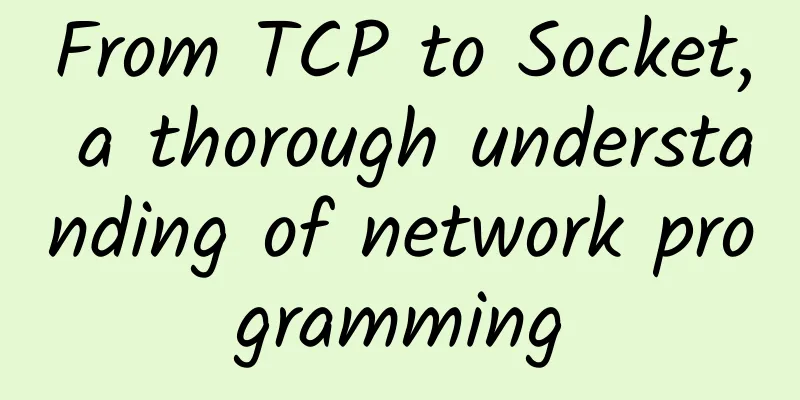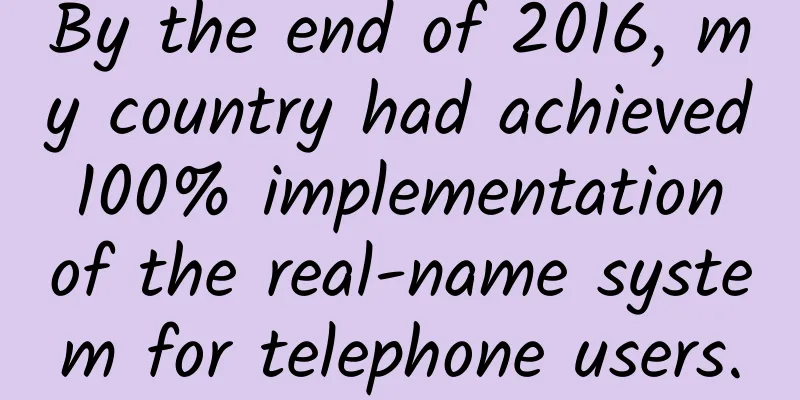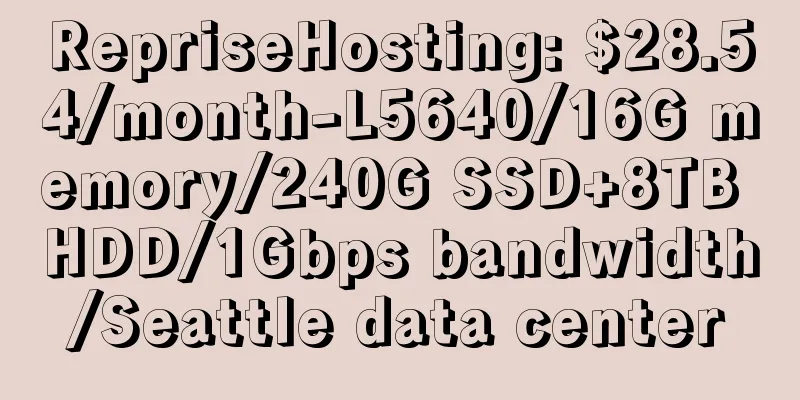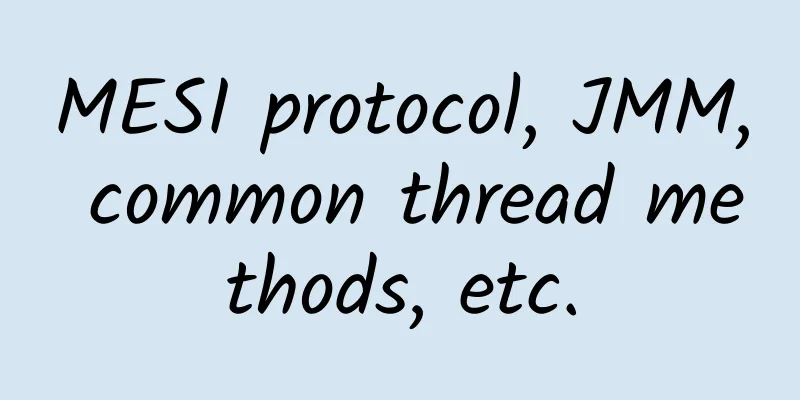Next generation office software: collaboration, dual links and multidimensional tables

|
Airtable, an overseas multi-dimensional spreadsheet software, has received a new round of E-round financing of US$270 million, becoming a rising star in the field of document software investment and financing with a post-investment valuation of US$5.8 billion. Entering the cloud era, we believe that the next generation of document software should be a combination of technological innovation and design innovation. More important than technological transformation is the revolutionary reshaping of software interaction design and application concepts. In this article, we focus on the next generation of office software, taking Notion, Airtable, and Obsidian as examples, outlining the appearance of the next generation of products, sorting out the hidden product features, and exploring the new attempts of domestic document software manufacturers. summary What does the next generation of office software look like? Dual-link and collaboration define the next generation of document applications : Dual-link refers to the two-way link between documents, which can make the knowledge points scattered in different documents related to each other, so that the information layout is no longer rigidly cut by the print format. In the online office scene of the Internet, the team uses dual-link notes to complete real-time document sharing and collaborative editing, thereby maximizing the efficiency of message transmission, and the value of collaboration is thus revealed. Multidimensional tables create a new form of data management: Multidimensional tables are based on relational databases, and one-click switching between calendars, kanban boards, Gantt charts and other table views completes the design reconstruction. We believe that collaboration will technically distinguish the new generation of office software from traditional documents; dual-link and multidimensional tables complete the reshaping of applications from the design concept, and the next generation of office software is a dual innovation of technology and design. What are the characteristics of the next generation of document products? The cloud-based delivery format makes the new generation of document products no longer as heavy as local software, but lightly enters thousands of terminal screens through the Internet. Since the data is stored in the cloud, users can obtain the same latest content on different devices, ensuring the multi-user and multi-terminal collaboration of the product. As data becomes increasingly abundant, the data information deposited in the same document platform will gradually be transformed into personal or team data assets, and the document template delivery methodology will be used. The increasing amount of information in document software increases the cost of user switching, and the information sedimentation feeds back to the document tool, which increases user stickiness. In addition, the next generation of document software aims to build a document ecosystem and realize all-in-one document applications through self-built and compatible third-party plug-ins. Are there any new generation office software products in China? Kingsoft Office's Flexpaper has entered the beta testing stage. Flexpaper is also based on the new generation of interactive design and application concepts, supporting real-time sharing and collaborative editing. Feishu Documents was born for team collaboration, bringing together online collaboration tools such as documents and spreadsheets, and is part of the Feishu ecosystem. Compared with the new generation of document software overseas, although Chinese manufacturers started 1-2 years later, after a period of full catch-up, they have been able to deliver to consumers a new generation of office software that is usable and easy to use. The next generation of office products is the next focus for manufacturers to improve their product matrix, establish user awareness, and compete in the office software market; it is a comprehensive consideration of software interaction design capabilities, technical research and development strength, and document ecosystem construction capabilities. We recommend paying attention to the progress of the new generation of products from leading manufacturers. risk Technological research and development is not as good as expected; market competition intensifies. text Microsoft Office (Word, Excel, PowerPoint) is a product of the traditional software era. Entering the cloud era, data storage has moved from local to cloud, and the demand for data editing has expanded from offline processing to online collaboration . Traditional office software such as Microsoft Word, which was born in 1983, is struggling to embrace the new era. Although document products such as Office 365 and G Suite have been launched one after another, this type of software has only been transformed into cloud technology, and the software's interactive design and application concepts are still in the previous era. We believe that the next generation of document software should not only be based on cloud transformation, but also have innovations in design concepts and usage concepts. If we redesign Word and Excel, what will they look like? What features will the next generation of document products have? Are there any new generation document products in China? In this article, we take Notion and Airtable as examples to imagine the new look of document products in the post-Office era, and sort out the characteristics of the "next generation of office software" hidden in them. On top of that, we explore the new product features launched by domestic manufacturers represented by Kingsoft Office and Feishu, revealing new market opportunities. What will the next generation of Word and Excel look like? Dual-chain notes: a new form of document organization Dual chains and collaboration define a new generation of document applications "Notes" take over from "documents" and flourish in new office scenarios. Traditional office scenarios revolve around messages. Emails are the channel for message delivery, and documents are the classic carriers of messages. Their primary goal is to record information accurately and appropriately. Their expression is usually subject to the constraints of laws and organizational regulations, and naturally there are more rigorous requirements for the format . Today, the rapid development of the Internet has created a more "light" office model. Some relatively cutting-edge industries no longer put the rigor of document formats first, but emphasize the rapid flow of information . At this time, a brand new note-taking application came into being for the new era of office scenarios, and began to erode the market for traditional documents. Figure 1: Various note-taking applications have emerged in the new era Source: Official websites of various companies, CICC Research Department Dual links and collaboration outline the new generation of office software. Dual links refer to the two-way links between documents. Creating links between related knowledge points is in line with the human brain's coherent thinking habits. Dual links can be used to connect knowledge points scattered in different documents. In the new office scenario, teams can complete real-time document sharing and collaborative editing online, thereby maximizing the efficiency of message transmission, and the value of collaboration is thus revealed. We believe that collaboration distinguishes the new generation of office software from traditional document software in terms of technology; dual links reshape office software from a design concept perspective, and collaboration and dual links define the new generation of document applications. The pages are interconnected to complete the construction of a personal knowledge system. Dual-chain notes support the continuity of knowledge point records. Imagine taking notes in class. When we write down knowledge point A, teachers usually mention related knowledge point B to help understand. At this time, the page linking function of dual-chain notes can link knowledge point A with knowledge point B, helping us to connect knowledge points originally scattered in a single document, linking related knowledge points to each other, and build a personal knowledge base. Figure 2: In Notion, you can nest pages layer by layer. Source: Notion official website, CICC Research Department Double-chain notes generate concise knowledge graphs and construct human-like thinking models. In addition to page links, some new-generation document software analyzes bidirectional links between texts, establishes connections between knowledge points, and then outlines a graph model around the text. Taking the overseas document software Obsidian as an example, it can count the links edited by users and connect the originally isolated knowledge into lines in the automatically generated graph; when the number of links accumulated in the application reaches a certain number, it can even outline a network graph between knowledge points, visualizing the human brain's thinking route and accumulated knowledge. Figure 3: Obsidian, a dual-chain note-taking software, automatically generates a knowledge graph similar to the human brain thinking structure by counting page links. Source: Obsidian official website, Linking Your Thinking, CICC Research Department The Internet is online and supports team interaction and sharing. The cloud-delivered software format ensures that Notion users can interact online and collaboratively edit documents. In Notion, you can use "@" to mark users, set schedules and reminder times, or share documents with designated team members through links to complete collaborative editing online. In addition, Notion supports the "Share to web" one-click sharing function to share documents to the entire network. Based on this function, users can build personal homepages and blogs more conveniently. Figure 4: Notion allows for easy document sharing and team collaboration Source: Notion official website, CICC Research Department Continuous pages are the carrier of all expressions The new generation of documents provides "infinite" extended pages. The genes of classic documents are hidden in the printing press, and their core appeal is printing and reading. The traditional electronic documents that have grown out of this are naturally limited to the printing layout sizes such as A3/A4/B4. The expression of text and graphics is rigidly cut by the layout, which is inconsistent with the human brain's tendency to think and express coherently. In order to support the uninterrupted recording of knowledge points, Dual-Chain Notes first realizes the coherence of expression and provides a page similar to a "canvas", based on which to carry imaginative content and rich document functions. Figure 5: Unlike traditional electronic documents where pages are cut by printed format, the new generation of electronic documents provides continuous extended pages Source: Microsoft Word, Notion official website, CICC Research Department Free combination of modules, all-in-one efficiency tool Block is the basic operation object of Notion. Modules can be in any form, such as text, images, codes, tables, third-party applications, etc. Modules organize page content neatly and orderly, and users can complete typesetting by dragging and dropping modules like building blocks. Freely combine modules of different forms to realize all-in-one efficiency tools. Notion currently provides more than 40 functional modules. By combining modules, you can easily complete productivity management. For example, combining the calendar and To-do list modules can be used for schedule management; combining the image module with the text module can quickly complete the construction of a personal blog; embedding page links into modules can be combined to create image boards, etc. The functions originally provided by multiple software are integrated into the new generation of documents and delivered to users through the same software entrance, maximizing the completion of all-in-one efficiency tools. Figure 6: Using Notion to achieve all-in-one efficiency tools Source: Notion official website, CICC Research Department Multidimensional tables - a new form of data management Relational database hosts work documents Use tables to manage data in an organized way. In a real office environment, documents are often a form of data presentation. Table-based office products such as Airtable emphasize data-centricity, organize data neatly in tables, and generate documents based on databases. Base and table are the core concepts of Airtable's data management. · Bases are used to divide the workspace. Each base is equivalent to an .xlsx file. Users can customize workspaces with base as the theme, such as learning plan base, customer relationship management base, etc. Each base database is equivalent to a relational database. Users can customize multiple tables in the base. A column in a table forms a field, and a row forms a record. In the base, a field can be expanded to form a new table, and the relationship between tables can be established with the field as the primary key. Figure 7: Airtable’s technical foundation is a relational database Source: Airtable official website, CICC Research Department Redesign of documents with multiple table views Airtable provides six table views, and users can switch the information layout with one click. The data recorded in the table is naturally neatly arranged, and users do not need to consider the typesetting and layout of the text too much. Furthermore, Airtable provides six chart views: grid, form, calendar, gallery, board, and Gantt chart. Users can switch the layout of information with one click. At the same time, Airtable also provides a variety of templates for users to choose from. Figure 8: Airtable provides six table views Source: Airtable official website, CICC Research Department Improve own plug-ins and establish document ecology A wealth of proprietary and third-party plug-ins facilitate data visualization. Airtable provides 44 plug-ins including pivot charts, code editors, maps, etc. to help users organize, display, and manage document information. At the same time, Airtable supports users to open source custom plug-ins on GitHub to jointly build a document ecosystem with Airtable as the core. As of June 2021, there are 259 open source plug-ins in the community. The code editor works with the database to make development more convenient. Airtable provides a rich set of APIs (programming interfaces) and SDKs (software development kits), covering data modeling, user interface, and testing, allowing developers to customize applications in its code development platform. In addition, since the table in Airtable is itself a relational database, working with the code editor is equivalent to delivering a front-end and back-end integrated development platform. Developers can easily use Airtable as a design, development, and testing platform for Demos. Figure 9: Airtable gradually improves its document ecosystem through various plug-ins Source: Airtable official website, CICC Research Department What are the characteristics of the next generation of office software? The next generation of office software is not only a technological upgrade, but also a redesign and a reshaping of concepts, with many characteristics. The cloud-based delivery format makes the new generation of document products no longer as heavy as local software, but lightly enters thousands of terminal screens through the Internet. Since the data is stored in the cloud, users can obtain the same latest content on different devices, ensuring the multi-user and multi-terminal collaboration of the product. With the increasing abundance of data, the data information deposited on the same document platform will gradually be transformed into a knowledge treasure house for individuals or teams, and presented through templates and knowledge graphs, and continuously iterated. Figure 10: We believe that the next generation of office software has five characteristics Source: CICC Research Department Feature 1: Cloud delivery - information accumulation Cloud delivery ensures that the new generation of office software can accumulate information. Classic office documents are born for message transmission. We edit documents locally and share them with team members through communication tools such as email and WeChat. The document format is constrained by the layout, and the document content is constrained by the system. The office scene in the Internet era weakens the seriousness of documents and emphasizes the instant and efficient flow of messages. Team members complete online division of labor, online editing, and online sharing through the Internet, and the work results are directly converted into dual-chain notes. The technical characteristics of cloud delivery and online access ensure that information can be accumulated in the next generation of office software. Figure 11: The new generation of document software is based on the Internet and realizes functions such as sharing and collaboration. Source: CICC Research Department Feature 2: Design Reshaping - Accumulating Creativity The new generation of office software has reshaped the software interaction design and application concepts, allowing the software to record creativity. We believe that in addition to cloud technology, the biggest feature that distinguishes the next generation of office software from traditional office document software is the reshaping of the software interaction interface and usage concepts. For example, document pages are no longer limited to print layouts, and users can express their ideas continuously and freely on infinitely extended pages. Secondly, the next generation of office software has reshaped the fixed thinking of users using "tables" to record data and "documents" to record text. We can also record text and insert pictures in table-type documents, and can complete one-click typesetting and sharing through multiple views. We believe that the next generation of office software uses revolutionary software design to reshape users' usage concepts, allowing creativity to be precipitated in the next generation of document products. Figure 12: Combining infinitely extended pages, multiple table views, modular layout and other designs, the next generation of documents has reshaped the design of document software Source: Notion official website, CICC Research Department Feature 3: Multi-terminal collaboration - sedimentation organization The new generation of document products supports multi-user and multi-terminal collaboration, allowing the software to be organized. Since the data edited in the next generation of document products is uniformly stored in the cloud, each terminal can read and edit the same information. In an online Internet environment, authorized users can update documents anytime and anywhere, and share them to other terminals to achieve multi-user and multi-terminal collaboration. The multi-terminal collaboration feature ensures that the next generation of document software supports team collaboration, thereby precipitating the organization in the software. Figure 13: New generation document software supports multi-user and multi-terminal collaboration Source: Notion official website, CICC Research Department Feature 4: Knowledge precipitation - precipitation method The new generation of office software helps users transform information into knowledge and delivers it through templates, allowing the software to accumulate methods. On the personal side, the gradually accumulated information can be further organized through document tools to form a personal knowledge system, such as depicting knowledge graphs through dual chains and storing knowledge partitions through base. On the enterprise side, the increasingly accumulated information can be accumulated into team work methodology, presented in the form of team templates; and continuously iterated under the revision of team members. The next generation of office software is not only a carrier of information, but also can accumulate methods. Figure 14: Delivering methodology by turning the knowledge accumulated by individuals and teams into templates Source: Notion official website, Airtable official website, CICC Research Department Feature 5: Open plug-ins - precipitation ecology The new generation of office software either opens document interfaces or introduces third-party plug-ins to allow the product ecosystem to settle. We found that the next generation of document products including Notion, Airtable, Coda, Obsidian, etc. all provide a wealth of self-built plug-ins and third-party interfaces; at the same time, they also accept user-open templates and custom plug-ins. The all-in-one application means a unified document entry and less application switching friction on the user side; on the product side, it means a richer document ecosystem. Figure 15: Notion supports inserting more than 500 third-party plug-ins into the page Source: Notion official website, CICC Research Department Various distinctive product features help the next generation of office software have strong user stickiness. We believe that rich document functions and convenient interaction methods can attract more users to record information in the next generation of document software, and the information is stored in the cloud. Users convert information into knowledge through document links, template editing and other functions provided by the software, and then deliver it as methods. With the support of the document ecosystem built by the next generation of office software, the software can meet users' document needs All in one. The gradual increase in knowledge has increased the cost of user switching, giving the next generation of office software extremely strong user stickiness. Figure 16: The next generation of document software has stronger user stickiness Source: Notion official website, CICC Research Department Are there similar new generation office software products in China? Flexpaper——Another puzzle piece in Kingsoft Office Cloud’s service product matrix Kingsoft Office's Flexpaper has entered the beta testing phase. At the end of 2020, Kingsoft Office announced a new collaboration strategy and released five new collaboration products, including Flexpaper. Users can create new Flexpaper documents in Kingsoft Documents (www.kdocs.cn). Flexpaper is also delivered through the cloud, allowing online sharing and real-time collaborative editing. Figure 17: Flexpaper entered the market through Kingsoft Document Source: Kingsoft Document official website, CICC Research Department Flexpaper is a next-generation document product that is simple, easy to use, and has comprehensive functions. Currently, Flexpaper supports the insertion of two proprietary plug-ins: flowcharts and mind maps, as well as three third-party plug-ins: Himalaya, Bilibili, and Baidu Maps. At the same time, it provides functions such as table insertion, document linking, and reminder settings. Flexpaper has a simple page, direct functions, and is simple and easy to use. It may become a new cloud document choice for more users. Figure 18: Domestic Flexpaper also provides rich next-generation document software functions Source: Kingsoft Document official website, CICC Research Department "Light" and "heavy" in one, Flexpaper further enriches Kingsoft Office's product matrix. We have discussed in the report "How big is Kingsoft Office's visible space" that Kingsoft Office is no longer limited to the "three-piece suit" of office, but has transformed towards service-oriented with "cloud + collaboration" as the main axis. Documents + spreadsheets + presentation documents are the three traditional modules of WPS Office, presenting a locally deployed and relatively "heavy" software form; Kingsoft Documents and WPS+ are deployed in the cloud and are relatively "light". The launch of Flexpaper further improves Kingsoft Office's cloud service matrix, is an anchor point for entering the new generation of document applications, further broadens the functional boundaries of document products, is an important attempt in the cloud era, and its future development prospects are worth imagining. Figure 19: We believe that WPS will be a “super app” in the future Source: Kingsoft Document official website, CICC Research Department "Light" and "heavy" in one, Flexpaper further enriches Kingsoft Office's product matrix. We have discussed in the report "How big is Kingsoft Office's visible space" that Kingsoft Office is no longer limited to the "three-piece suit" of office, but has transformed towards service-oriented with "cloud + collaboration" as the main axis. Documents + spreadsheets + presentation documents are the three traditional modules of WPS Office, presenting a locally deployed and relatively "heavy" software form; Kingsoft Documents and WPS+ are deployed in the cloud and are relatively "light". The launch of Flexpaper further improves Kingsoft Office's cloud service matrix, is an anchor point for entering the new generation of document applications, further broadens the functional boundaries of document products, is an important attempt in the cloud era, and its future development prospects are worth imagining. Figure 19: We believe that WPS will be a “super app” in the future Source: WPS Office, Kingsoft Office official website, CICC Research Department Feishu Documents——Online office collaboration tool Feishu documents are designed for team collaboration. Feishu was originally an internal efficiency tool for ByteDance, and was opened to the outside world in 2019 as a one-stop communication and collaboration platform for enterprises. In Feishu, the team's collaboration scenarios can be directly developed around documents, and members of the organization can share documents online, edit them collaboratively, and save the communication results directly in the form of documents. Feishu documents are designed for team collaboration and are highly coupled with the OKR concept. In essence, it is an online office collaboration tool. Figure 20: Evolution of ByteDance’s internal communication tools Source: QCon, Geek Park, CICC Research Department Feishu Documents brings together online collaboration tools such as documents, spreadsheets, and mind notes, and the product has comprehensive functions. Similar to Notion, Feishu Documents integrates two text organization forms: online documents and online spreadsheets. · Online documents: Feishu documents support up to 200 people editing at the same time and 5,000 people reading at the same time. Use "@" to set reminders in the document, and the corresponding users can receive Feishu notifications. In 2020, Cloud Documents launched new functions such as two-way links, mind maps, and code block insertion; provided two self-built applications for information collection and countdown, and aimed to improve the document ecosystem through 12 third-party web plug-ins including Baidu Maps and Xigua Video, as well as open document interfaces. Figure 21: Feishu Online Documents provides a variety of next-generation document functions Source: Feishu Documents official website, CICC Research Department Online tables: Feishu's online tables can import Excel data, support certain data analysis capabilities, provide four views: grid, board, album, and Gantt chart, and can be inserted into Feishu online documents. Its multi-dimensional tables have also entered the beta testing stage. Figure 22: Feishu online tables provide four views Source: Lark Documents official website, CICC Research Department Kingsoft Office Flexpaper and Feishu Document have different product positioning and belong to different competitive tracks. On the one hand, we believe that Feishu Document is more dependent on the Feishu platform and is an inseparable part of the Feishu collaboration tool ecosystem; it is difficult for non-Feishu users to register as Feishu users specifically to use Feishu Document. Therefore, we believe that Feishu Document's competitors should be document products similar to those in the Qiwei and DingTalk ecosystems. On the other hand, Kingsoft Office has the ability to be both light and heavy. Flexpaper is a "light" document native to the cloud and operating independently. Together with WPS, which is deployed locally and carries classic "heavy" documents, they form Kingsoft Office's "light and heavy" combination and one-stop office application ecosystem. Flexpaper is not only a powerful supplement to Kingsoft Office's cloud service ecosystem, but also a cloud document product that can attract users and operate independently. Compared with Feishu documents, it is more independent. Therefore, we believe that although both belong to the next generation of office software in terms of function, they belong to different tracks in terms of product positioning. Investors are advised to look at them separately. Comparison of new generation document software at home and abroad Comparison of various software shows that overseas software has comprehensive functions and is relatively complex to use. We compared the important functions of domestic Flexpaper and Feishu Documents with overseas Notion and Airtable. The comparison results show that Notion and Airtable have the most comprehensive functions and the most open ecosystem, but at the same time are relatively complex to use, and currently no Chinese version is available, requiring users to understand how to use the software in advance. Flexpaper is simple and easy to use, while Feishu documents are rich in functions. Compared with Flexpaper, Feishu documents are more comprehensive and support relatively more plug-ins; but at the same time, Flexpaper does not have a separate toolbar, and requires the mouse to click function buttons to expand various applications, which may be inconsistent with the usage habits of traditional Office users. The Flexpaper toolbar and page are separated, which meets the document usage needs of most users while complying with the next generation of document design, and is relatively simpler and easier to use. Figure 23: Comparison of main functions of four next-generation document software Source: Kingsoft Document official website, Lark Document official website, Notion official website, Airtable official website, CICC Research Department Note: This table was created using the Flexpaper beta version, and the statistics are as of the end of June 2021. The specific functions are subject to the official latest version. Figure 24: Comparison of Kingsoft Office Flexpaper and Feishu document interface Source: Kingsoft Document official website, Lark Document official website, CICC Research Department In the primary market, the next generation of document software has received great attention. In foreign markets, Notion and Airtable are hot investment spots in the primary market. Among them, Airtable's valuation reached US$5.8 billion after its E round of financing in March 2021; Notion's post-investment valuation in April 2020 was as high as US$2 billion. In the domestic market, document software including Wolai, Evernote, and Flomo have also received repeated financing in the primary market. Figure 25: Airtable’s valuation reached $5.8 billion after its Series E round of financing Source: CB Daily, CICC Research Department Chart 26: Notion’s valuation reaches $2 billion Source: TechCrunch, CICC Research Compared with the new generation of document software overseas, although Chinese manufacturers started 1-2 years later, they have been able to deliver a new generation of usable and easy-to-use document products to consumers after a period of full catch-up. The competition for the next generation of document products is a comprehensive consideration of each manufacturer's software interaction design capabilities, technical research and development strength, and document ecosystem construction capabilities; the product itself is another masterpiece of each manufacturer to improve its own product matrix, establish user awareness, and compete in the office software market. We recommend paying attention to manufacturers who are the first to launch the next generation of document software. |
>>: "Online Documents" crashes in real time?
Recommend
5 web trends you need to know about in 2021
On December 14, 2020, a massive network outage ca...
How to solve the TCP packet sticking and unpacking problem when using Netty communication? The answer is so simple
[[311931]] This article will explain the followin...
Huawei releases MetaAAU, reducing energy consumption by 30% and improving performance and energy saving
On September 27, at the China (Beijing) Internati...
DeployNode: $3.49/month KVM-1GB/15G NVMe/2TB/Los Angeles & New York
DeployNode is a foreign hosting company founded i...
5G improves network determinism and supports digital transformation
[[326206]] Operators see enterprise and industria...
The launching ceremony of the 4th "Zhanhua Cup" 5G Application Collection Competition-Fujian Regional Competition and the Information and Communication Development Research Forum were successfully held in Xiamen
[[406599]] From left to right: Ye Kai, Song Zifu,...
TmhHost: US AS9929 line from 30 yuan/month, US CN2 GIA/Hong Kong CTG monthly payment from 40 yuan
TmhHost is a Chinese hosting company founded in 2...
What new developments have occurred in the 5G field in the first half of 2022?
On June 6, 2022, as 5G licenses were issued for t...
JustVPS 20% off: $3.52/month KVM-1GB/20GB/300M unlimited traffic/21 data centers available
JustVPS.pro is BFB ONE FZ-LLC registered in the U...
Wi-Fi 6E: When will it arrive? What will be the impact?
Wi-Fi 6E: When is it coming? New wireless spectru...
V5.NET is 30% off in July, and monthly payment starts from HK$525 for new Korean servers
V5.NET has launched new products. This month, the...
Network upgrades you should consider in 2021
As 2020 winds down and the new year dawns, it pro...
What are honeypots, honey baits, honey tags, honeynets, honey farms... in network security?
As security practitioners, whether we are doing p...
Talk about TCP long connection and heartbeat
[[254870]] 1 Introduction Many Java programmers m...
Liu Yunjie: Determinism, programmability, and cloudification will become the future network trends, comprehensively improving network service customization capabilities
At the "2020 Network 5.0 Summit", when ...









